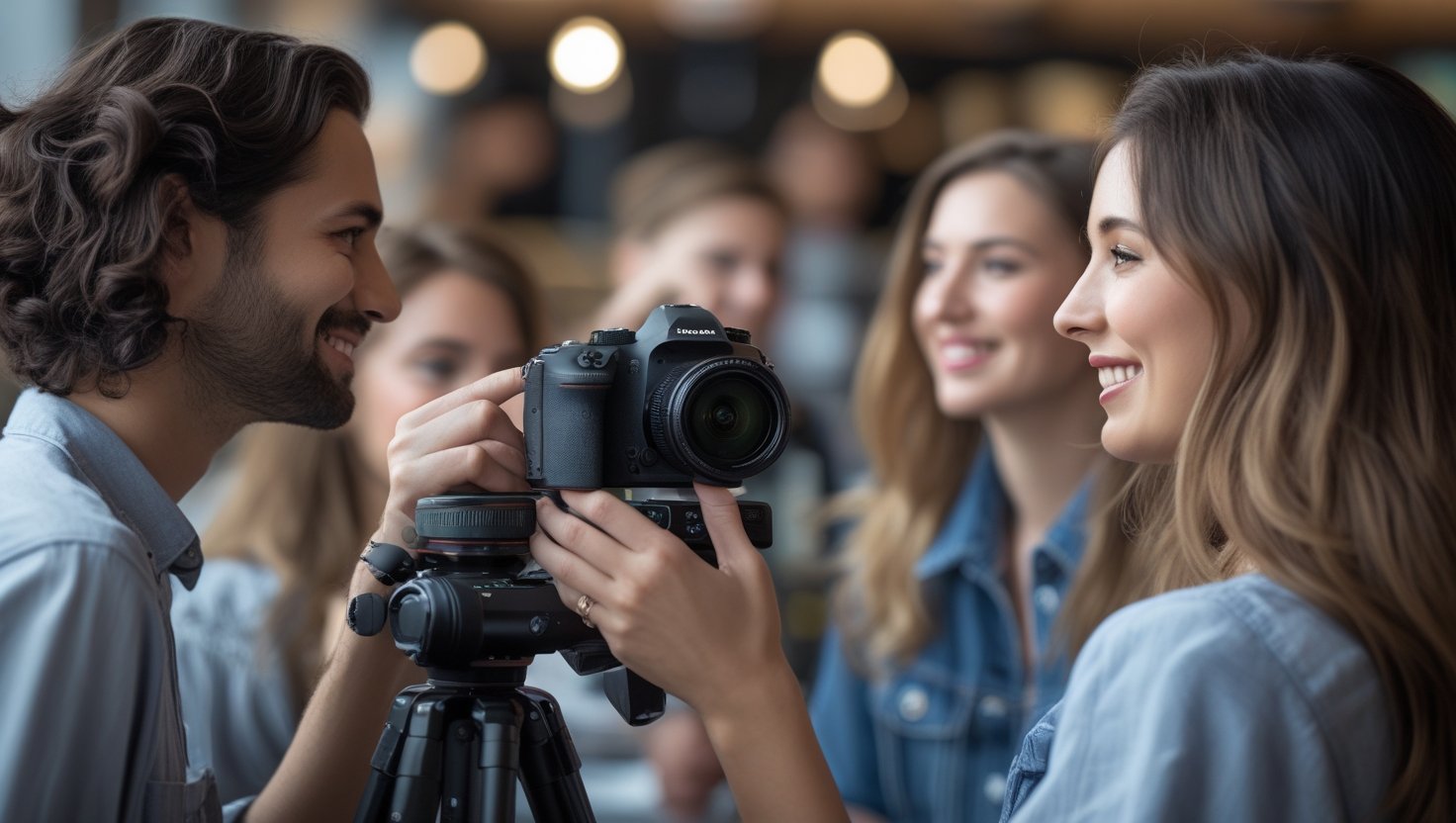Picture this: You’ve invested $50,000 in an influencer campaign featuring a TikTok star with 2 million followers. The content is glossy, the reach is massive, yet sales barely flicker. Sound familiar? You’re not alone. In 2023, 61% of marketers admitted their influencer campaigns failed to meet ROI expectations. But what if an AI-driven crystal ball could predict exactly which influencer would make your audience click, share, and buy? Enter InfluencersGineWuld—the data-powered methodology turning chaotic guesswork into precision-engineered success.
The Influencer Marketing Maze: Why Brands Are Stuck in 2010
Remember when influencer marketing meant mailing free products to Instagram celebrities? Today, it’s a $21.1 billion battlefield where brands drown in three critical pitfalls:
- The “Vanity Metric” Vortex: Follower counts lie. Nano-influencers (1K–10K followers) drive 300% higher engagement than mega-influencers, yet 74% of brands still prioritize reach over relevance.
- The Manual Matching Nightmare: Scrolling through thousands of profiles? Human teams take 12+ hours to vet one influencer—only to miss niche creators with hyper-engaged audiences.
- ROI Blind Spots: Without real-time tracking, you’re flying blind. Did that unboxing video drive sales, or just likes? Most brands can’t connect campaign spikes to revenue.
Traditional influencer marketing feels like navigating a rainforest with a paper map. You might survive, but you’ll waste resources, miss opportunities, and risk irrelevance.
InfluencersGineWuld: Your AI Co-Pilot for the Creator Economy
So, what is InfluencersGineWuld? Think of it as a matchmaking algorithm on steroids—blending neuroscience, behavioral economics, and machine learning to pair brands with influencers who don’t just reach audiences, but resonate with them.
Unlike legacy platforms, InfluencersGineWuld doesn’t stop at demographics. It analyzes:
- Audience Psychographics: Values, pain points, and hidden desires (e.g., “eco-conscious moms who distrust fast fashion”).
- Content DNA: Video pacing, color palettes, even emoji patterns that trigger engagement.
- Fraud Detection: Spotting fake followers or engagement farms in under 60 seconds.
The Tech Under the Hood: How InfluencersGineWuld Works
Here’s the magic in three steps:
- Predictive Matching:
- AI scrapes 500+ data points (past campaign performance, audience sentiment, brand affinity).
- Scores influencers on a “Relevance Index” (0–100).
- Example: A sustainable sneaker brand isn’t matched with generic fitness influencers, but with micro-creators whose followers actively search #veganleather and #ethicalmanufacturing.
- Real-Time Campaign Cortex:
- Live dashboards track metrics beyond likes—think website traffic spikes, cart abandonment drops, or UGC shares.
- Algorithms flag underperformers in 15 minutes, not 15 days.
- Automated Optimization:
- If a campaign underdelivers, AI reallocates budget to top performers mid-flight.
- Chatbots handle influencer contracts and payments, freeing humans for strategy.
Table: Traditional vs. InfluencersGineWuld Approach
| Metric | Traditional Method | InfluencersGineWuld |
|---|---|---|
| Influencer Vetting | Manual (10+ hours per candidate) | AI-driven (2 minutes) |
| Audience Match Depth | Basic demographics (age/location) | Psychographics + behavioral intent |
| ROI Measurement | Post-campaign sales data | Real-time revenue attribution |
| Fraud Detection | Post-campaign analysis | Pre-campaign red-flag alerts |
Case Study: How Bloom Cosmetics Scaled ROI by 320%
Bloom (a indie vegan makeup brand) struggled with campaigns that generated buzz but no sales. Using InfluencersGineWuld, they:
- Identified 12 micro-influencers (5K–20K followers) whose audiences actively discussed “clean beauty dupes.”
- Tracked a 3-week campaign in real-time, shifting budget when two creators drove 80% of link clicks.
- Result: $3.20 earned for every $1 spent—up from $0.70 previously.
Beyond Hype: The Tangible ROI of AI-Driven Influence
Why does InfluencersGineWuld outperform? Because it replaces human bias with machine intelligence. Consider:
- Cost Efficiency: Automated vetting slashes 80% of agency fees.
- Engagement Surge: Precision matches see 2.3x higher comment-to-like ratios.
- Crisis Avoidance: AI flagged an influencer for “brand safety risks” after detecting past controversial tweets—saving a client’s product launch.
The Future Is Autonomous (and It’s Here)
InfluencersGineWuld is evolving beyond campaigns. Soon, its AI will:
- Predict viral content trends before they explode (e.g., “mystery unboxings” in Q4 2024).
- Generate briefs via ChatGPT-style interfaces: “Create a UGC campaign for Gen Z gamers valuing sustainability.”
- Integrate with Metaverse platforms, tracking avatar-influencer impact.
Your 4-Step Launch Plan for InfluencersGineWuld
Ready to dive in? Start here:
- Audit Your Assets: Use free tools like HypeAuditor to grade current influencer partners.
- Pilot a Nano-Campaign: Test InfluencersGineWuld with 3–5 micro-influencers on a single product.
- Demand Real-Time Dashboards: Insist on access to live engagement/revenue data.
- Iterate Ruthlessly: Shift budgets weekly based on AI performance alerts.
The Bottom Line: No More Spray-and-Pray
Influencer marketing isn’t dying—it’s evolving. Brands clinging to follower counts and gut feelings will bleed budget. Those leveraging InfluencersGineWuld? They’re building armies of authentic advocates who convert. As Maya Angelou famously said, “People forget what you said, but remember how you made them feel.”* AI ensures the right creators make your audience feel seen.
FAQs:
Q1: Is this just for Fortune 500 companies?
A: Not at all! InfluencersGineWuld scales for startups. Its AI finds cost-effective micro-influencers with highly targeted audiences—perfect for budgets under $10K.
Q2: How does it handle influencer fraud?
A: Algorithms analyze follower growth spikes, comment authenticity, and device fingerprints. Red flags? You’re alerted before contracts are signed.
Q3: Can it integrate with my existing MarTech stack?
A: Yes. Most InfluencersGineWuld platforms sync with tools like Shopify, Google Analytics, and HubSpot for unified tracking.
Q4: What about creative control?
A: AI suggests content angles based on performance data, but humans approve every brief. Think of it as a genius intern who crunches numbers.
Q5: How fast do brands see results?
A: Real-time dashboards show engagement within hours. Sales impact? Typically measurable in 2–4 weeks for considered purchases.
Q6: Is there a minimum budget?
A: Some platforms start at $500/month for basic matching. Enterprise suites with automation run $5K+.
Q7: Will AI replace human marketers?
A: No—it frees them. Instead of vetting influencers, you’ll strategize campaigns and build relationships.
READ ALSO: Pedro Vaz Paulo: Architect of Business Success in an Uncertain World

